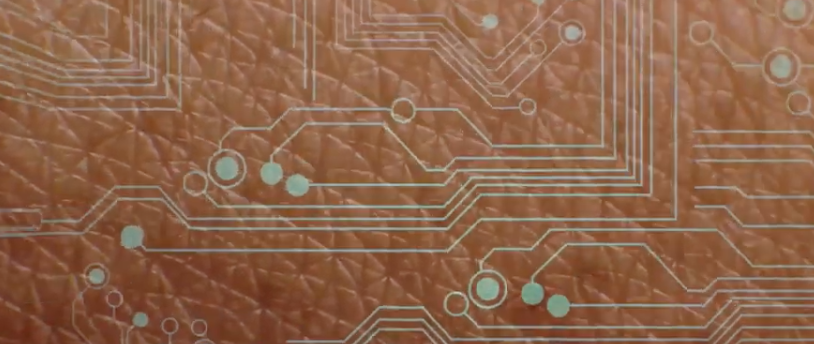John Rogers, Yonggang Huang and Northwestern colleagues have developed an “epidermal VR” system that adds a sense of touch to any virtual reality experience.
The device incorporates a distributed array of 32 individually programmable, millimeter-scale actuators, each of which generates a discrete sense of touch at a corresponding location on the skin. Each resonates most strongly at 200 cycles per second, where the skin exhibits maximum sensitivity. The actuators are embedded into a soft silicone polymer that adheres to the skin without tape or straps. The wireless, battery-free, device communicates with a phone or tablet through near-field communication protocols.
When a user touches the screen, that pattern of touch transmits to the patch. When video chatting from different locations, users can feel each other’s touch.
The next generation will be slimmer and lighter, with actuators that can produce heating and stretching sensations. They will eventually be thin and flexible enough to be woven into clothes.
Click to view Nature video
Join ApplySci at the 13th Wearable Tech + Digital Health + Neurotech Silicon Valley conference on February 11-12, 2020 at Quadrus Sand Hill Road. Speakers include: Zhenan Bao, Stanford – Vinod Khosla, Khosla Ventures – Mark Chevillet, Facebook – Shahin Farshchi, Lux Capital – Carla Pugh, Stanford – Nathan Intrator, Tel Aviv University | Neurosteer – Wei Gao, Caltech – Sergiu Pasca, Stanford – Rudy Tanzi, Harvard – Sheng Xu, UC San Diego – Dror Ben-Zeev, University of Washington – Mikael Eliasson, Roche – Unity Stoakes, StartUp Health
